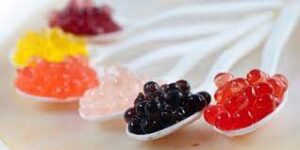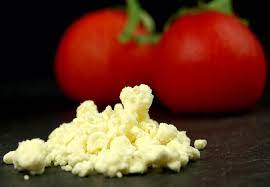MOLECULAR GASTRONOMY
Molecular cooking, also known as molecular gastronomy, is a cooking technique that involves the use of scientific principles and laboratory techniques to create unique textures, flavors, and presentations in food. This style of cooking uses a variety of tools and ingredients that are not commonly found in traditional kitchens, including sous-vide machines, liquid nitrogen, and various hydrocolloids such as agar-agar and xanthan gum. By combining these tools and ingredients, molecular cooks are able to manipulate the physical and chemical properties of food to create unique and innovative dishes. Molecular cooking has become popular among chefs and food enthusiasts in recent years, and is often associated with avant-garde cuisine and fine dining. However, the techniques and principles of molecular cooking can also be applied to home cooking, allowing amateur chefs to experiment with new and exciting culinary creations. While molecular cooking can be challenging and requires a certain level of technical knowledge, it offers a unique and creative approach to cooking that can produce stunning and delicious results.
TECNIQUE
There are numerous techniques associated with molecular cooking that are used to create unique textures, flavors, and presentations in food. Here are some of the most common techniques:
Sous-vide: This technique involves cooking food in a vacuum-sealed pouch at a precisely controlled temperature, often for an extended period of time. This can result in perfectly cooked and tender meat, fish, or vegetables.
Spherification: This technique involves transforming liquid ingredients into small, gel-like spheres. This is often achieved using sodium alginate and calcium chloride, which react to form a thin membrane around the liquid.
Foam: This technique involves creating a light and airy foam using an ingredient such as egg whites, gelatin, or lecithin. This foam can be used to add flavor and texture to dishes.
Gelling: This technique involves using hydrocolloids such as agar-agar, carrageenan, or xanthan gum to create gels with unique textures and properties. Dehydration: This technique involves removing moisture from ingredients using a dehydrator or low-temperature oven. This can be used to create crispy and flavorful textures.
Emulsification: This technique involves creating stable suspensions of one liquid in another, often using an emulsifier such as lecithin or mustard.
Smoking: This technique involves infusing food with smoke flavor using a smoking gun or other smoking apparatus. These techniques can be combined and modified to create endless possibilities for unique and innovative culinary creations.
PRINCIPLES OF MOLECULAR GASTRONOMY
The Molecular Cooking is based on the application of scientific principles and techniques to food preparation.
Some of the key principles include:
Understanding the physical and chemical properties of ingredients: In order to manipulate the properties of ingredients,
molecular cooks must understand their chemical composition and physical characteristics.
Control of temperature and time: Precise control of temperature and cooking time is essential in molecular cooking,
particularly with techniques like sous-vide cooking.
Use of hydrocolloids: Hydrocolloids are substances that can change the texture and physical properties of liquids and solids.
Molecular cooks often use hydrocolloids like agar-agar and xanthan gum to create unique textures and presentations in food.
Emphasis on presentation: Molecular cooking often places a high emphasis on the visual presentation of food,
with dishes designed to be aesthetically pleasing as well as delicious.
Experimentation and innovation: Molecular cooking encourages experimentation and innovation,
with chefs encouraged to explore new techniques and ingredients to create unique and exciting culinary creations.
Overall, the principles of molecular cooking are focused on pushing the boundaries of traditional cooking and
exploring new techniques and possibilities for creating unique and delicious food experiences.
EQUIPMENT FOR MOLECULAR PREPARATION
Molecular cooking often requires specialized equipment and tools in order to achieve the unique textures and presentations associated with this style of cuisine. Here are some of the most common equipment and tools used in molecular cooking:
Sous-vide machine: A sous-vide machine allows for precise control of cooking temperature and time when cooking food in vacuum-sealed pouches.
Immersion circulator: An immersion circulator is a device used to circulate water in a sous-vide bath and maintain a precise temperature.
Vacuum sealer: A vacuum sealer is used to create airtight seals around food when cooking sous-vide.
Whipping siphon: A whipping siphon is a tool that can be used to create foams, mousses, and other airy textures by infusing a liquid with gas.
Digital scale: Precise measurement of ingredients is critical in molecular cooking, and a digital scale is essential for accurate measurements.
Liquid nitrogen: Liquid nitrogen is used to rapidly freeze ingredients or create a dramatic effect, such as a cloud of smoke.
Dehydrator: A dehydrator is used to remove moisture from food, resulting in crispy textures and intense flavors.
Molecular gastronomy kit: These kits include a variety of ingredients and tools used in molecular cooking, such as hydrocolloids, pipettes, and syringes.
Smoking gun: A smoking gun is used to infuse food with smoke flavor, adding depth and complexity to dishes.
Molecular cookbooks: These cookbooks provide recipes and instructions for using molecular cooking techniques to create innovative dishes.
Overall, molecular cooking requires a range of specialized equipment and tools that allow for precise control over temperature, texture, and presentation.
While some of these tools may be expensive or difficult to obtain, many of the techniques of molecular cooking can also be adapted for home cooking using more readily available equipment.
SPECIFIC INGREDIENTS FOR MOLECULAR GASTRONOMY PREPARATION
Molecular cooking often involves the use of specialized ingredients that can help to create unique textures, flavors, and presentations in food.
Here are some of the most common ingredients used in molecular cooking, along with their specifications:
Agar-agar: Agar-agar is a type of seaweed-derived hydrocolloid that is commonly used to create gels with a firm, brittle texture.
It can be used to create a wide range of textures, from soft and pliable to firm and brittle.
Sodium alginate: Sodium alginate is a hydrocolloid derived from brown algae that is used to create spherification,
the process of transforming liquid ingredients into small, gel-like spheres.
Calcium chloride: Calcium chloride is a salt that is used in spherification to form a thin membrane around liquid ingredients.
Xanthan gum: Xanthan gum is a hydrocolloid that is commonly used to thicken and stabilize sauces, dressings, and other liquids.
Soy lecithin: Soy lecithin is an emulsifier that can be used to create stable suspensions of one liquid in another. It is often used to create foams and other airy textures.
Maltodextrin: Maltodextrin is a starch-derived carbohydrate that can be used to create powders from liquids, such as turning olive oil into a powder.
Nitrous oxide (N2O): Nitrous oxide is a gas that is commonly used in whipping siphons to create foams and other airy textures.
Liquid nitrogen: Liquid nitrogen is a very cold liquid that is often used to rapidly freeze ingredients or create a dramatic effect, such as a cloud of smoke. Transglutaminase (TG or "meat glue"): Transglutaminase is an enzyme that can be used to bind proteins together, creating new textures and forms. It is commonly used to create "meat glue" to bind small pieces of meat together to create a larger, more uniform piece.
Sous-vide bags: These specialized vacuum-sealed bags are designed to withstand the high temperatures and pressures associated with sous-vide cooking.
Overall, the specialized ingredients used in molecular cooking can be quite different from those used in traditional cooking, and can require some experimentation and practice to master.
However, with the right tools and techniques, these ingredients can be used to create truly innovative and unique culinary creations.
MOLECULAR GASTRONOMY RECIPE
Fruit caviar
Ingredients:
1 cup fruit juice (such as orange or pomegranate)
1 tsp agar-agar
1 cup water
1/2 tsp calcium chloride
Equipment:
Squeeze bottle Slotted spoon
Method: Mix the fruit juice and agar-agar in a saucepan and bring to a boil.
Simmer for 2-3 minutes until the agar-agar is dissolved.
Pour the mixture into a squeeze bottle and let it cool for a few minutes.
Mix the water and calcium chloride in a bowl.
Squeeze small droplets of the fruit juice mixture into the calcium chloride solution.
The droplets will form into small spheres.
Use a slotted spoon to transfer the caviar to a bowl of cold water to rinse off any excess calcium chloride.
Serve the fruit caviar on top of desserts or as a garnish.

SPHERIFIED COCKTAIL
Ingredients:
1 cup of your favorite cocktail
1/2 tsp sodium alginate
4 cups water
1/2 tsp calcium chloride
Equipment: Immersion blender Slotted spoon
Method: Mix the cocktail and sodium alginate in a blender and blend until smooth.
Mix the water and calcium chloride in a bowl.
Let the mixture sit for 5-10 minutes to remove any air bubbles.
Use a dropper to drop small amounts of the cocktail mixture into the calcium chloride solution.
The droplets will form into small spheres.
Use a slotted spoon to transfer the spheres to a bowl of cold water to rinse off any excess calcium chloride.
Serve the cocktail spheres in a glass with the remaining cocktail mixture.

Ingredients:
1/2 cup olive oil
1/2 cup maltodextrin
Salt and pepper to taste
Equipment: Mixing bowl Whisk
Method: Mix the olive oil and maltodextrin in a bowl and whisk until the mixture forms a powder.
Season with salt and pepper to taste. Serve the olive oil powder as a garnish for soups, salads, or other dishes.

SOUSVIDE STEAK
Ingredients:
1 thick-cut steak
Salt and pepper to taste
Equipment: Sous-vide machine Vacuum sealer
Method: Season the steak with salt and pepper. Place the steak in a vacuum-sealed bag and seal with a vacuum sealer.
Set the sous-vide machine to the desired temperature (e.g. 55°C for medium-rare) and place the bag in the water bath.
Cook the steak for 1-2 hours, depending on thickness. Remove the steak from the bag and pat dry with paper towels.
Sear the steak in a hot skillet or on a grill to form a crust.
Serve the steak with your favorite side dishes.

